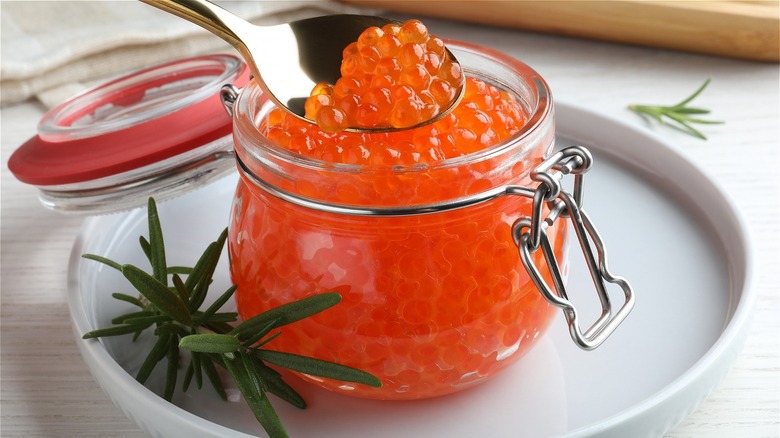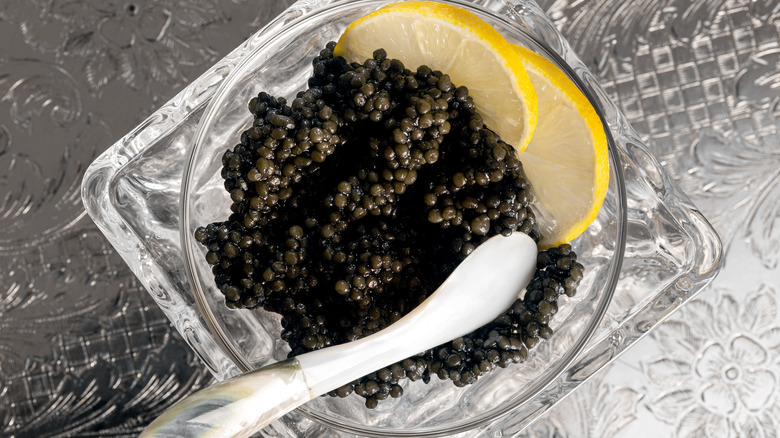Expert Explains Why Caviar Should Always Be Served Cold
No two cans of caviar are the same, but no matter whether it comes from the Hackleback or the Iranian albino sturgeon, caviar should be savored like the exquisite delicacy that it is. People often enjoy caviar with crackers, chips, bread, omelets, and even a sandwich, but there are etiquettes in place to enjoy these luxurious eggs that make the experience all the better.
As luxurious as caviar is, it is also delicate. If you've ever had caviar, chances are you were given a mother-of-pearl spoon to eat it with, and there's a good reason for that. Good caviar has a mild flavor, so eating it with a metallic spoon might affect its taste. You didn't pay all that money to taste metal in your caviar, so it's best to eat it with a mother-of-pearl spoon since it doesn't transfer smells. Glass and porcelain spoons can also be used as substitutes.
Another thing you might have noticed is that caviar is never served warm. Caviar bump, a practice in which a small portion of caviar is placed between the index finger and the thumb on the back of the hand to warm it and subsequently lick off, has gained popularity in recent years, but some experts argue that cold caviar is still the best. Mashed chatted with expert Eric Ripert, the chef, and co-owner of Le Bernardin in New York, to know why caviar should always be served cold.
Why caviar tastes better when cold
According to Eric Ripert, caviar is basically oil, so when it comes in contact with warm food, or your hands for that matter, they become soft. When served cold, the delicate eggs remain firm with a neutral smell. "The cold helps to keep away the smell of the ocean. Sometimes, if [the] caviar is warm, it can become slightly fishy," Ripert said.
That is not to say that caviar cannot be served warm at all, but Ripert says that only the great ones can handle being warmed. The caviar bump is a great way to enjoy expensive caviar since the warmth releases more flavor. Just make sure you don't let it sit on your hand for too long.
Ripert likes to enjoy his caviar on blinis, freshly made, or on toast points. "Even high-quality crackers can give contrast to the richness of caviar," he says. Although traditional garnishes like chopped egg yolks, capers, crème fraiche, lemon juice, and chopped onions are popular options for caviar pairing, Ripert likes to keep things simple. "Traditional garnishes were used long ago to hide the fishiness and saltiness of [the] caviar. Today, great caviar doesn't need its quality to be hidden by these strong flavors."
Now that we've established that serving caviar cold is the way to go, it is important to note that you shouldn't toss it in the freezer for long. When frozen, caviar might change in texture and burst after thawing.

